May 20, 2025
Author:Sam Wonder
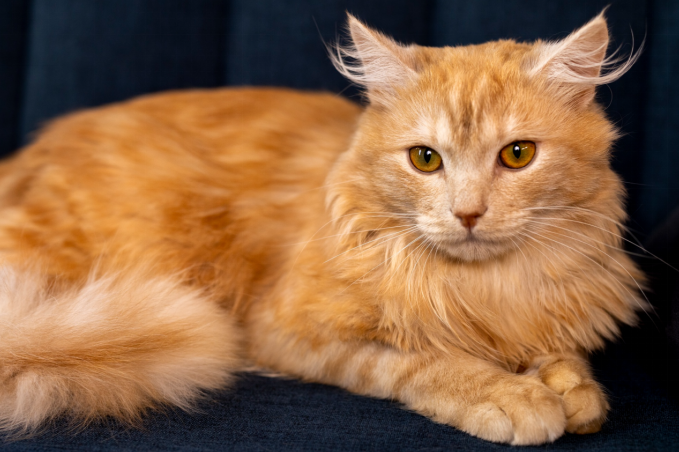
Ever gazed into a cat’s eyes and felt as if the sun itself glowed back at you? Orange irises seem almost magical, sparking endless questions from curious pet parents. Can cats have orange eyes, or is that warm hue a trick of the light? While blue, green, and yellow eyes are common, true orange shines like molten copper and turns every glance into a memorable moment. In this guide, we dive into the genetics behind fiery irises, spotlight the breeds that flaunt them, and explain why they remain so rare. By the end, you will not only know how cats have orange eyes but also how to care for those brilliant gems.
Eye color begins with melanin. Specialized cells called melanocytes deposit this pigment in the iris. Kittens start life with pale blue peepers because their melanocytes stay dormant. Around six to twelve weeks, the cells switch on and set the final shade. When cats have orange eyes, they carry a moderate-to-high melanin load—enough to deepen yellow into a glowing tangerine without tipping into dark copper.
Feline irises form a living rainbow. Blue and aqua appear when melanin stays low. Green and yellow arise from medium pigment levels, while true orange and copper need a stronger dose. Rare dichromatic eyes split two colors down the middle of the same iris, and odd-eyed cats display one hue per eye. If you ever meet a tuxedo cat with mismatched irises, check out tabby patterns to see how coat genes can interact with those dazzling shades.
People often blur the line between amber, orange, and copper. Amber carries more gold, copper slides toward deep russet, but orange lands in the sweet spot that recalls a autumn sunset. This warmth pops against dark coats; black cat breeds seem to glow when framed by orange irises. Even pale silvers gain drama from that vivid contrast.
Higher melanin equals richer shades. In the eye, it gathers in both the stroma and the posterior epithelium. When enough pigment layers up, cats have orange eyes that brim with fiery intensity. For comparison, blue-eyed cats like some Turkish Angoras carry almost no melanin in the front iris layer, so light scatters instead of absorbing.
Sometimes genetics throw in a twist. Heterochromia splits colors between eyes, while dichromatic eyes mix two shades within a single iris. Though these quirks can mingle with orange, they do not guarantee it. The defining factor remains total pigment. If one segment packs medium melanin, that slice will flash orange. You might spot such a pattern while reading about when cats’ eyes change color.
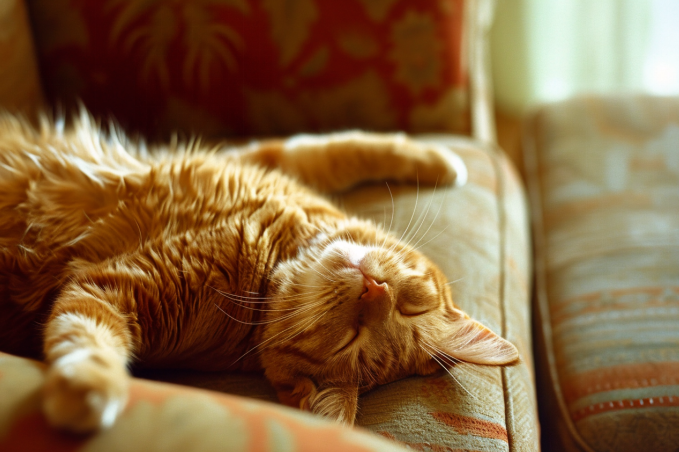
British breeders spent decades selecting for vivid cooper hues in Shorthairs. Their work proved that a cluster of polygenes nudges the iris toward redder tones. Coat genes can help, too. The same “O” allele that creates ginger fur boosts pheomelanin production throughout the body, so many orange tabbies sport matching irises. Still, only a subset reach the saturation where cats have orange eyes rather than gold. If you want to explore coat-eye links further, consider how ginger males tend to dominate tabby litters.
Below are seven breeds where registries list orange or copper eyes as desirable:
|
Breed |
Eye Standard Snapshot |
|
British Shorthair |
The gold-to-copper scale defines show quality. Blue coats with bright pumpkin eyes draw heavy applause. |
|
Bombay |
Nicknamed “parlor panther.” Jet fur encircles blazing copper, proving cats have orange eyes in dramatic fashion. |
|
Maine Coon |
While green and gold dominate, oranges surface in red-based coats, especially in solid gingers. |
|
Japanese Bobtail |
Calico bobtails sometimes reveal apricot irises that echo their patches. |
|
Turkish Van |
Known for odd eyes, yet all-orange pairs occur in white-and-red individuals. |
|
Devon Rex |
Their huge ears frame wide amber discs that often edge into sunset orange. |
|
Abyssinian |
Rich ruddy coats pair with burnished irises, making each gaze feel ancient and regal. |
Check each club’s specific wording, but the gist stays clear: orange eyes rank high on the scorecard.
Pedigree papers are not essential. Street cats and domestic shorthairs can surprise you. “Lady Gray,” a shelter rescue, became an online star after her slate coat offset molten irises. Viral tales like hers inspire many owners to keep their cats healthy so those brilliant eyes stay clear.
Only seven mainstream breeds list orange under official standards, compared with dozens that accept green. That small pool alone makes the color special. Factor in genetics—both parents must load pigment—and you see why only about one in twenty pedigreed kittens will mature into a cat where cats have orange eyes. Rarity rivals hazel and true brown, yet the fiery hue garners louder applause on social media.
Take Clementine, a black rescue whose face circulates on Halloween memes. Her bright irises mirror jack-o-lantern flames. Owners share that photos rarely need filters because the color already pops. Dark coats intensify the glow, though light ones carry a softer charm. No surprise many cat photographers reach for pet cameras with feeders to capture that perfect gaze while away.
Some tales claim orange-eyed cats guard homes or predict weather. Black cats with orange eyes often star as Halloween icons, fueling myths about luck. Genetics, not magic, shapes iris shade; personality still hinges on upbringing. Sharing science helps debunk fears, just as articles debunk myths around why cats hunt mice.
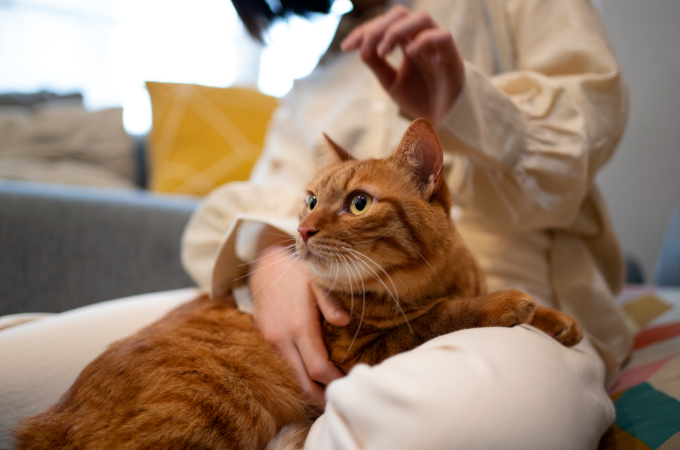
TikTok hashtags dedicated to pumpkin-eyed felines rack up millions of views. Each clip of Felix or Lady Gray garners comments like “I never knew cats have orange eyes!” That buzz translates into adoption interest and educational posts on topics such as how to remove cat hair before a photo shoot.
No research shows that cats have orange eyes because of disease. Color itself is harmless. Still, every cat can face infections, ulcers, or uveitis. Redness, cloudiness, or a sudden color shift needs a vet.
White cats with one orange and one blue eye sometimes experience deafness in the blue side due to the dominant white gene, not the orange pigment. Albinism can thin the iris and raise light sensitivity. Owners should track hydration and nutrition to keep tissues healthy.
Schedule annual exams. Clean minor discharge with saline. Offer omega-rich diets for retinal health; choose quality food to support pigment cells. Use an automatic feeder for steady meals, so the immune system stays strong. If a golden eye turns muddy orange overnight, call the vet at once.
Yellow and green dominate at roughly half the global population. Blue sits around five percent. Estimates peg true amber and orange at two percent—hence the thrill when owners learn their cats have orange eyes.
Copper veers darker and browner; amber leans honey-gold. Persian and Scottish Fold standards tilt toward copper, while British Shorthairs favor clear orange. Reading breed rules feels a bit like comparing water bowls to fountains; for a deeper dive, explore a cat fountain care guide.
Odd-eyed cats can sport one orange eye alongside green. Dichromatic irises sometimes place an orange wedge next to blue. Such eyes mesmerize viewers just as much as the coolest automatic water fountains entrance picky drinkers.
Orange-eyed cats remain a rare wonder. Genetic pigment boosts, selective breeding, and a dash of luck create the fiery look. From British Shorthairs to mixed-breed rescues, cats have orange eyes that light up rooms and social feeds alike. While the hue holds no special health risk, regular care keeps those irises clear. Next time you spot a feline with glowing marmalade eyes, pause and admire the living art. Share your snapshots of cats whose cats have orange eyes on your favorite platform—let’s celebrate every shade in the feline rainbow.
Label:
Popular Post

What to Feed a Sick Dog With No Appetite? [2025 Guide]
May 16, 2023

Troubleshooting Common Issues with Automatic Pet Feeders: Tips & Tricks for Pet Owners
Oct 26, 2023
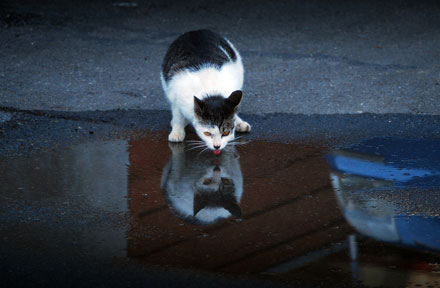
Why Does My Cat Cough After Drinking Water? 8 Potential Reasons
Mar 13, 2023
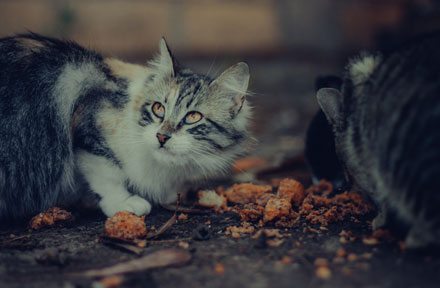
My Cat Only Eats A Little at A Time - What to Do?
Feb 27, 2023
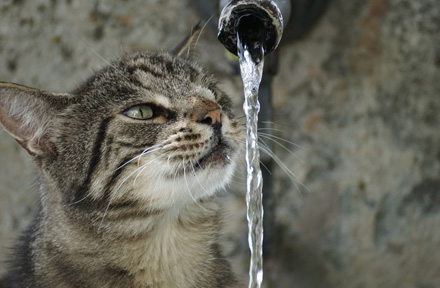
Why is My Cat Throwing up Water? Top 5 Causes Here
Feb 08, 2023
$99.99
$129.99
Copyright © 2025 WOPET. All Rights Reserved.